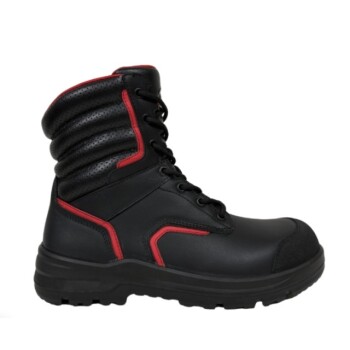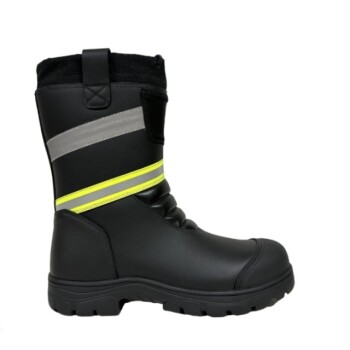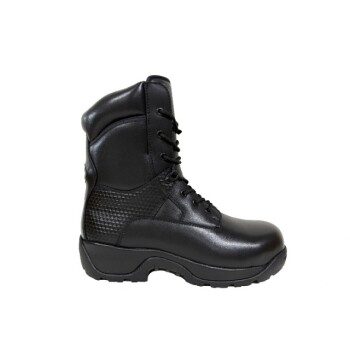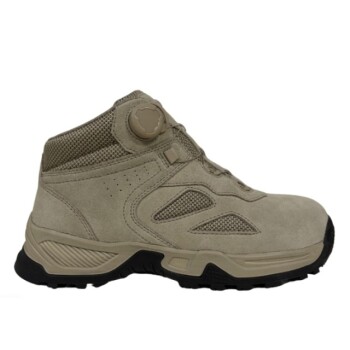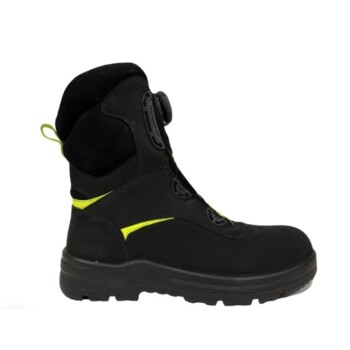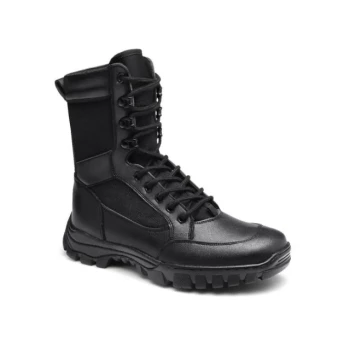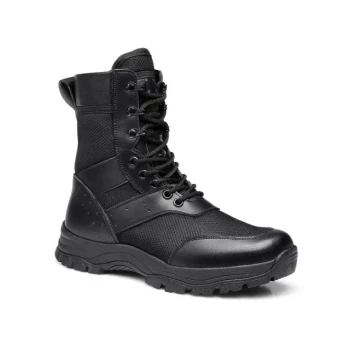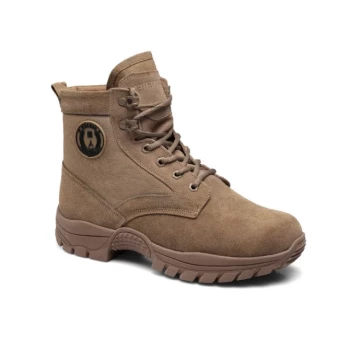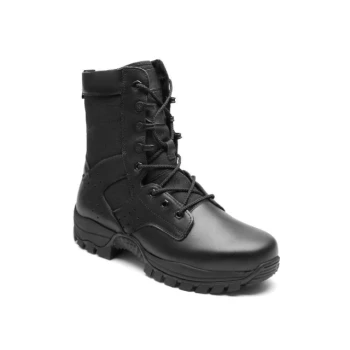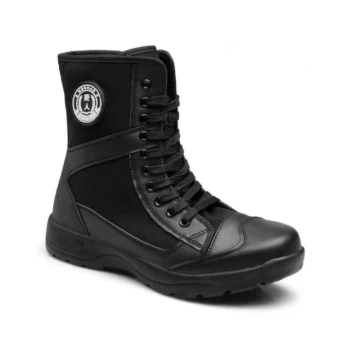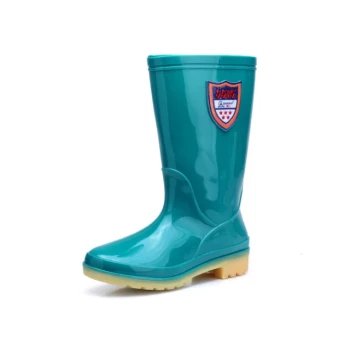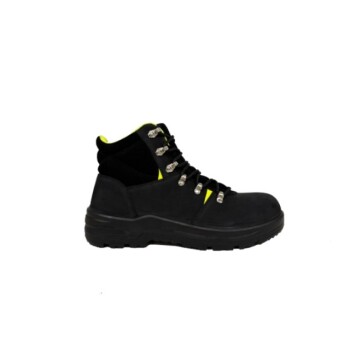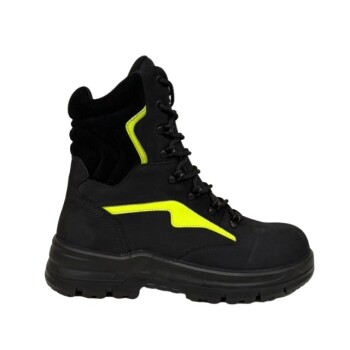The most effective way to break in new tall boots is through a combination of consistent, gradual wear and targeted aids like heel lifts. Start by wearing the boots with thick socks around the house for short periods to allow the leather to begin molding to your leg's shape without causing significant discomfort or scuffing the boots.
The core principle of breaking in tall boots is to gently and patiently encourage the stiff leather to conform to your unique anatomy. Aggressive "hacks" that involve excess water or heat risk permanently damaging your investment.
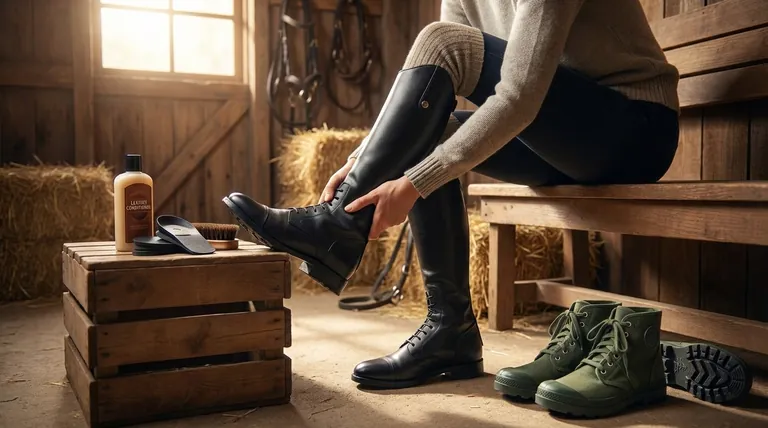
The Foundational Method: Consistent, Gradual Wear
The break-in period is a necessary process where the boot's leather softens and creases in key areas, primarily the ankle, to match your leg's movement. Patience is essential.
Start at Home
Before anything else, wear your new boots inside your home for 15-30 minute intervals. Pair them with thick socks to create a gentle, consistent stretch from the inside.
This initial step serves two purposes: it begins the molding process and allows you to confirm the fit is correct before the boots show any wear, preserving your ability to return them if necessary.
Transition to Barn Activities
Once you're comfortable wearing them for longer periods at home, begin wearing them for light activities around the barn. Avoid any wet work like hosing off a horse or mucking stalls.
The goal is to get your body heat and movement to work on the leather in a real-world environment, accelerating the softening process.
Expect the "First Rides" Discomfort
The first few rides in new tall boots will be uncomfortable. The stiffness will be most noticeable behind the knee and at the ankle.
This is a normal and expected part of the process. The boot needs the distinct flexion of riding in the stirrups to properly "drop" and form the crucial creases around your ankle.
Tools and Techniques to Accelerate Comfort
While time and wear are the primary factors, several tools can make the break-in period faster and far more comfortable.
Heel Lifts for Ankle Drop
Inserting a simple heel lift or riser inside your boot is the single most effective aid. This slightly elevates your heel, which immediately relieves the painful pinching pressure behind your knee.
It also encourages the boot to crease and drop at the ankle more quickly, which is the ultimate goal of the break-in process. You can remove the lifts once the boots have softened.
Manual Flexing for Softness
When you take the boots off, spend a few minutes manually working the leather. Hold the boot and repeatedly bend it at the ankle and across the ball of the foot.
This physical manipulation helps loosen the dense leather fibers, supplementing the work done by actually wearing them.
Protect Your Skin
To prevent painful blisters and rubbing, especially behind the knee, apply moleskin or wear specialized silicone sock sleeves. This creates a protective barrier between your skin and the stiffest parts of the boot.
Common Pitfalls: Methods to Avoid
In an effort to speed up the process, many riders turn to methods that can cause irreversible damage to the leather. Your boots are a significant investment; protect them.
The Dangers of Aggressive Wetting
You may hear about the "bathtub method" or wearing soaking wet socks. Avoid these methods. Forcing leather to saturate and then dry on your leg can strip essential oils, cause the material to become brittle, and lead to bacterial growth.
While it may mold the boot faster, it does so at the expense of the leather's long-term health and integrity.
The Problem with Direct Heat
Never use a hairdryer or place your boots near a direct heat source to speed up drying or soften them. Concentrated heat will dry out the leather too quickly, causing it to shrink unevenly and crack.
Using the Wrong Conditioners
Avoid using saddle soap, mink oil, or other general tack conditioners. These products are often too harsh or oily for the finely finished leather used in tall boots and can strip the shine or damage the material. If you use a conditioner, ensure it is specifically formulated for high-end boot leather.
Your Break-In Strategy
Select your approach based on your priorities for comfort, speed, and the longevity of your boots.
- If your primary focus is preserving the boot's integrity: Stick to the foundational method of gradual wear, supplement with manual flexing, and be patient.
- If your primary focus is personal comfort: Immediately use heel lifts and moleskin behind the knee to minimize pain from the very first wear.
- If you need to speed up the process: Combine all the safe methods—gradual wear, heel lifts, and manual flexing—and consider a light application of a boot-specific leather conditioner to soften key areas.
Ultimately, patience is the key to achieving a custom fit that will last for years.
Summary Table:
| Method | Purpose | Key Takeaway |
|---|---|---|
| Gradual Wear | Molds leather to your leg's shape | Start with short sessions at home, then light barn work. |
| Heel Lifts | Relieves knee pressure, encourages ankle drop | The most effective aid for immediate comfort. |
| Manual Flexing | Loosens leather fibers | Supplement wear by bending the boots at the ankle. |
| Skin Protection | Prevents blisters | Use moleskin or silicone sleeves behind the knee. |
| Avoid Wetting/Heat | Protects leather integrity | Aggressive methods can cause permanent damage. |
Ready for a Perfect Fit? Let 3515 Be Your Boot Manufacturer.
Breaking in boots should be about comfort, not compromising quality. As a large-scale manufacturer, 3515 produces a comprehensive range of high-quality footwear for distributors, brand owners, and bulk clients. Our production capabilities encompass all types of equestrian and fashion boots, ensuring durability and a superior fit from the start.
Partner with us to offer your customers boots that are worth the break-in process.
Contact 3515 today to discuss your manufacturing needs and elevate your product line.
Visual Guide
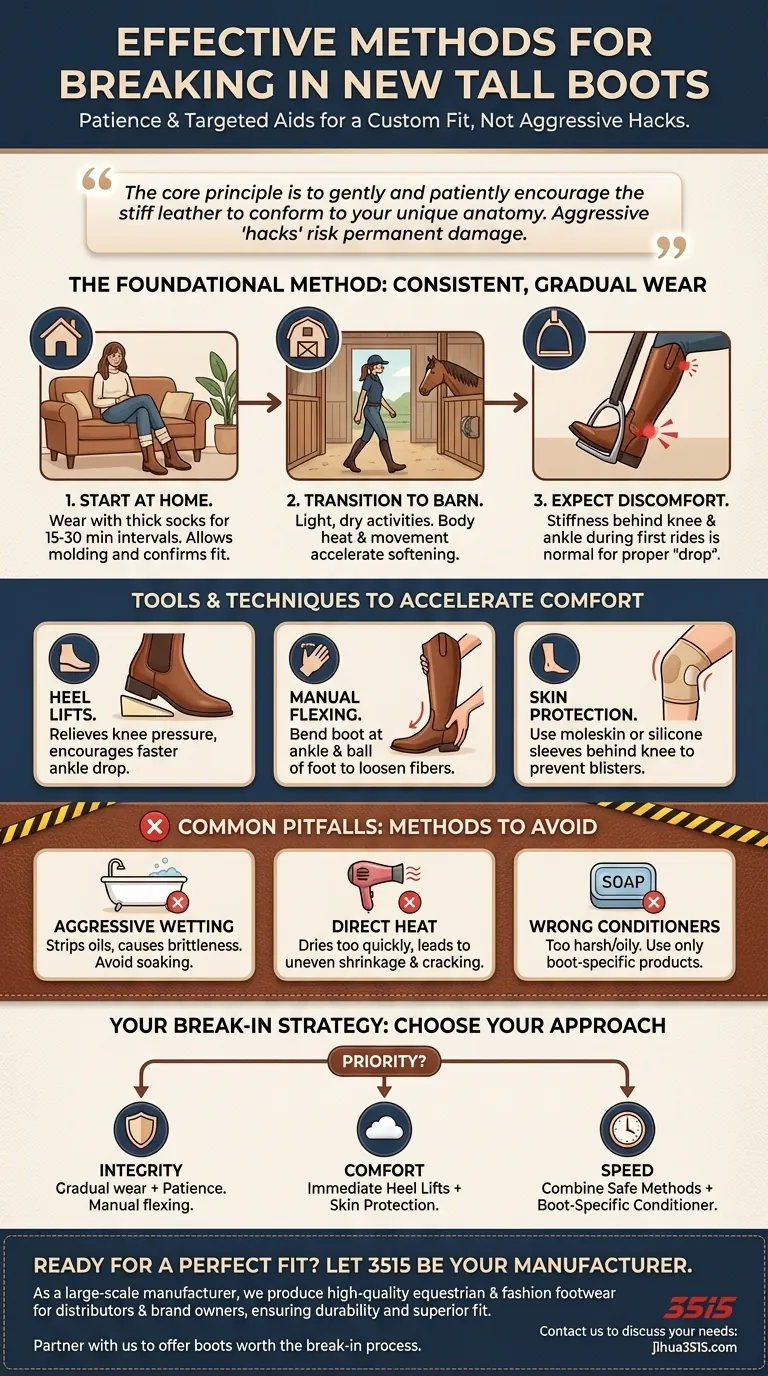
Related Products
- Factory-Direct Wholesale Canvas Boots with High-Traction Rubber Soles
- Premium Wholesale Waterproof Safety Boots High Performance Protection for Industrial Markets
- Wholesale Safety Footwear Manufacturer for Bulk & Custom OEM Orders
- Customizable Anti-Smash Safety Boots for Wholesale & Private Label Manufacturing
- High Performance Fire-Retardant Waterproof Safety Boots
People Also Ask
- Why are rubber soles beneficial in cold-weather boots? Superior Traction & Waterproofing
- What types of work environments are hiker-style rubber outsoles best for? Ideal for Outdoor & Industrial Safety
- What are the advantages of rubber soles in safety boots? Unbeatable Grip & Durability
- What should be avoided when storing boots with outsoles? Protect Your Investment from Dry Rot & Decay
- What is a vulcanized sole? Discover the Secret to Superior Flexibility and Grip

